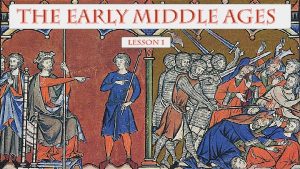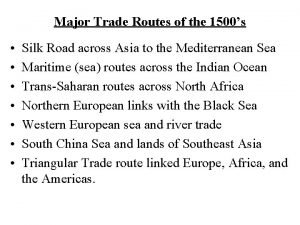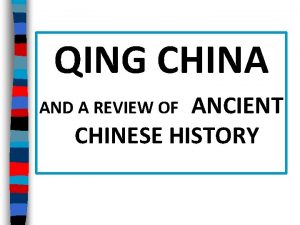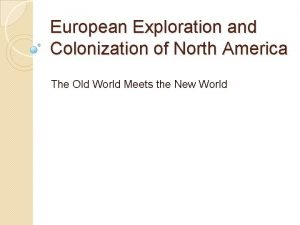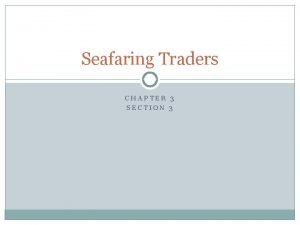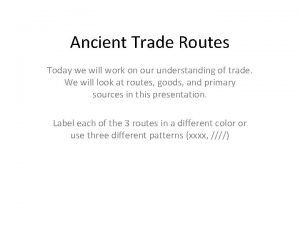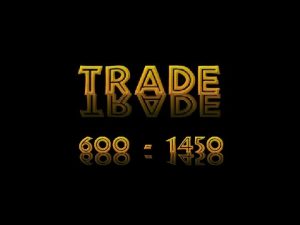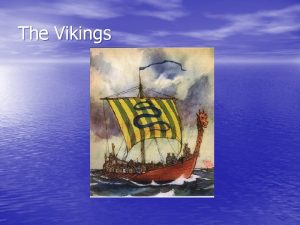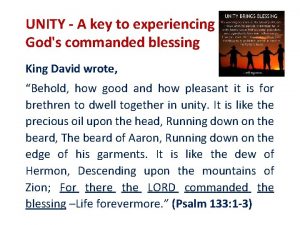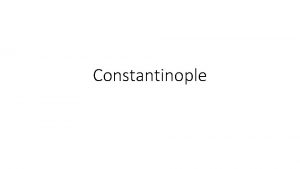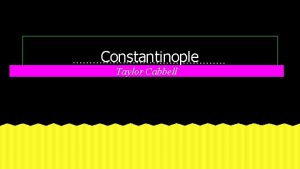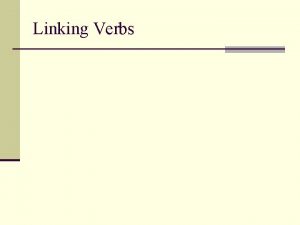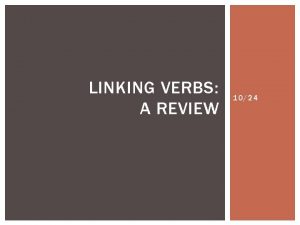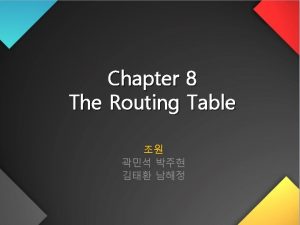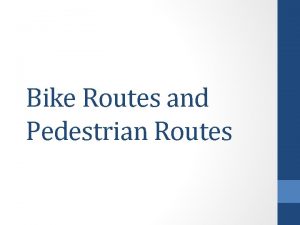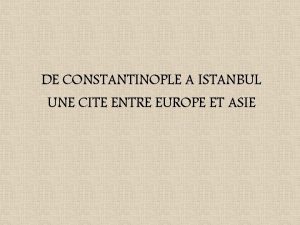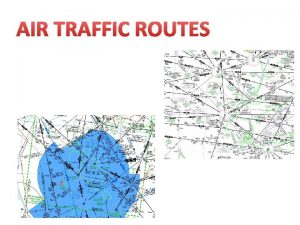Constantinople commanded key trade routes linking Europe and



















- Slides: 19



○ Constantinople commanded key trade routes linking Europe and Asia ○ The Byzantine Empire promoted a brilliant civilization that blended ancient Greek, Roman, and Christian influences with other traditions of the Mediterranean world

➢ The thousand-year span between the fall of the Roman empire and the Renaissance beginnings of modern history is known as the Middle Ages. ➢ the Roman emperor Constantine rebuilt the Greek city of Byzantium and then renamed it after himself— Constantinople. ➢ In time, the eastern Roman empire became known as the Byzantine empire. Where do most of the trade routes meet? What makes this a strategic location for trade?

➢ The Byzantine empire reached its greatest size under the emperor Justinian, who ruled from 527 to 565. His achievements include: 1. Byzantine armies reconquered North Africa, Italy, and the southern Iberian peninsula

➢ Why did Constantinople become a rich and powerful city? ○ Constantinople had an excellent harbor and it was protected by walls and water on three sides. It also commanded key trade routes linking Europe and Asia, making it Europe's busiest marketplace.

➢ In Europe, the centuries after the fall of Rome are called the Middle Ages , which lasted from about 500 to 1350

➢ Emperor Justinian ( 483 AD-565 AD ) ➢ Noted for his administrative reorganization of the imperial government and for his sponsorship of a codification of laws known as the Code of Justinian.

2. He rebuilt the capital of Constantinople 3. He set up a commission to collect, revise, and organize all the laws of ancient Rome, called the Justinian Code ➢ Under Justinian, the Byzantine empire was an economic and military power ○ Peasants worked the land, paid taxes, and provided soldiers for the military

○ Greek fire (liquid thrown toward an enemy, igniting on contact) was an effective and terrifying weapon of the Byzantine navy ➢ The empire withstood several attacks after Justinian. ○ Among the fiercest attacks came from the Arab armies that were carrying a new religion, Islam, into the Mediterranean world and beyond

➢ The Germanic tribes that conquered parts of the Roman empire included the Goths, Vandals, Saxons, and Franks ○ Between 400 -700, Germanic tribes carved Western Europe into small kingdoms ○ The Franks were the strongest and most successful kingdom, conquering present-day France and neighboring lands in the 400 s

■ In 486, Clovis, king of the Franks, conquered the former Roman province of Gaul (later known as France) and converted to Christianity

➢ Muslim armies overran Christian lands from Judea to North Africa and Spain ○ Islam is a religion that began in Arabia around 622 ○ Over the next 200 years, Muslims, or believers in Islam, built a huge empire ➢ When a Muslim army crossed into France, Charles Martel rallied Frankish warriors. The Battle of Tours in 732 A. D. was a major victory for Christians against the Muslim invaders.

➢ In 768, the grandson of Charles Martel became king of the Franks. ➢ Charlemagne (Charles the Great) built an empire reaching across what is now France, Germany, and part of Italy ○ 800 - Pope Leo III placed a crown on Charlemagne’s head and proclaimed him Emperor of the Romans

○ At the battle of Tours in 732, Christian warriors triumphed. To them, the victory was a sign that God was on their side ○ Muslims advanced no farther into Western Europe, although they continued to rule most of what is now Spain

○ Importance of the crowning ceremony: ■ Pope Leo III revived the ideal of a united Christian community (Monarchies have backing of the Church) ■ A growing divide results between the Western Roman Empire and the Eastern Byzantine Empire. ■ + Local regions become unified (the start of nations) ■ - Empire continues to fraction (loss of unity)

➢ Charlemagne worked closely with the Church to spread Christianity to the conquered peoples on the fringes of his empire ➢ Charlemagne appointed powerful nobles to rule local regions ○ To keep control of these provincial rulers, he sent out officials called missi dominici to check on roads, listen to grievances, and see that justice was done ➢ Charlemagne revived Latin learning in his kingdom

➢ In 843, Charlemagne’s grandsons drew up the Treaty of Verdun, which split the empire into three regions ➢ Three sources of attack (700 -1000): Muslims, Magyars, and Vikings ○ About 900, the Magyars (an ethnic group centered in present-day Hungary) overran Eastern Europe and attacked the Byzantine empire

○ Vikings were Scandinavian (Norway, Denmark, Sweden) explorers, traders, and warriors that raided Europe from the 700 s through the 1100 s ■ Leif Erikson set up a short-lived Viking colony on the continent of North America in about the year 1000
 Why did constantinople become a rich and powerful city
Why did constantinople become a rich and powerful city Trans-saharan trade route
Trans-saharan trade route Trade routes silk road
Trade routes silk road Trade routes in the 1500s
Trade routes in the 1500s Ming dynasty trade routes
Ming dynasty trade routes Who paid for jacques cartier's voyage
Who paid for jacques cartier's voyage What is phoenicia's greatest legacy to the world
What is phoenicia's greatest legacy to the world Camel saddle ap world history
Camel saddle ap world history Persian empire trade routes
Persian empire trade routes Gupta empire trade routes
Gupta empire trade routes Colonial slavery apush
Colonial slavery apush What country are vikings from
What country are vikings from Byzantine trade routes
Byzantine trade routes Dynamic picture
Dynamic picture Commanded blessing in unity
Commanded blessing in unity Commanded blessing in unity
Commanded blessing in unity Mbta key bus routes
Mbta key bus routes Trade diversion and trade creation
Trade diversion and trade creation Trade diversion and trade creation
Trade diversion and trade creation Which is the most enduring free trade area in the world?
Which is the most enduring free trade area in the world?
